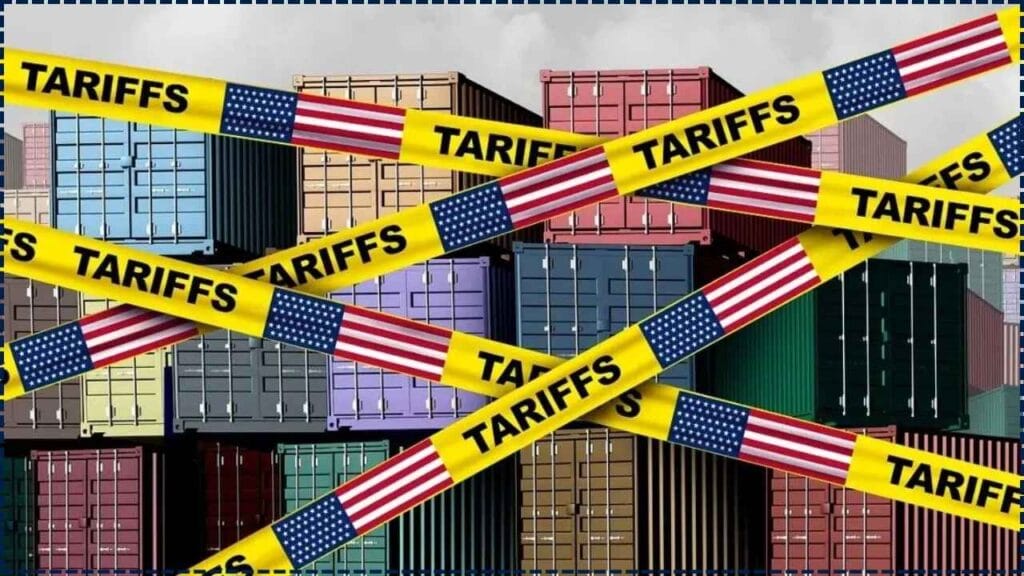The Truth About Tariffs and the U.S. Trade Deficit: The phrase “tariffs and the U.S. trade deficit” might sound like political buzzwords tossed around during debates, but it hits home harder than you think. From grocery bills to jobs in your town, these economic policies affect us all. Right now, the U.S. trade deficit is climbing fast, and recent tariff hikes might be doing more harm than good. Let’s break it down in everyday language, without skipping the facts.

The Truth About Tariffs and the U.S. Trade Deficit
| Topic | Details |
|---|---|
| Current U.S. Trade Deficit | Record $140.5 billion (March 2025) |
| Tariff Rate (2025) | Averaging 17.8% — highest in 100+ years |
| Cost to Consumers | $1,155/year per household (2025) |
| Economic Impact | GDP could shrink by 6%; wages may drop by 5% |
| Official Resources | U.S. Census Trade Data, CBO Report, Wharton Budget Model |
Tariffs were meant to protect American industries and shrink the trade deficit, but right now, they’re mostly raising prices, straining global ties, and hurting the very folks they were supposed to help. The U.S. trade deficit has never been higher, and the road ahead looks rough unless we rethink our strategy. The truth? We need smarter trade policies, not just bigger taxes at the border.
What Is the U.S. Trade Deficit?
In simple terms, a trade deficit means the U.S. buys more stuff from other countries than it sells. In March 2025 alone, that gap hit a record-breaking $140.5 billion, according to Reuters. We import everything from electronics to clothes to oil, and when we don’t export enough to balance it out, we go into the red.
Trade deficits aren’t always bad. They can show strong consumer demand. But a persistent, sky-high trade deficit can hurt U.S. jobs and growth in the long run — especially when paired with policies that increase costs, like tariffs.
What Are Tariffs, and Why Do They Matter?
Tariffs are basically taxes on stuff we import. The idea is to make foreign products more expensive so that American-made goods look like a better deal. It’s like telling your kids to eat home-cooked food by raising the price of McDonald’s.
But here’s the twist: consumers and small businesses pay those taxes, not foreign governments.
According to the Tax Foundation, American households are shelling out an extra $1,155 per year on average due to tariff-related price hikes.
The Surge in Tariffs (And Why It’s Costing You)
In 2025, tariffs reached an average rate of 17.8% — the highest we’ve seen in modern U.S. history, according to Wikipedia.
So what does that mean for your day-to-day?
- Groceries: Imported food items like cheese, fruit, and seafood cost more.
- Electronics: Your next phone or laptop is likely 10–20% pricier.
- Cars & Parts: Higher sticker prices and maintenance costs.
- Farm Equipment: Farmers pay more, pass the costs along.
This isn’t theoretical. The Wharton Budget Model forecasts long-term damage: GDP shrinking by 6% and wages falling 5% over time (Wharton Report).
Why the Trade Deficit Keeps Growing
Despite the tariffs, the trade deficit hasn’t shrunk — it’s exploded. Why?
- Consumers keep spending: Americans still want foreign goods.
- Businesses are stockpiling: Companies imported more before tariff hikes hit.
- Exports are getting hit by retaliation: Other countries slap tariffs on U.S. goods in return, hurting American farmers and manufacturers.
It’s like trying to fix a leaky bucket by slapping a sticker on it. You might slow the drip, but you’re not fixing the hole.
The Truth About Tariffs and the U.S. Trade Deficit: How Tariffs Affect You
1. Higher Prices
Tariffs make imports more expensive. Retailers pass that cost on to you.
2. Job Uncertainty
Some U.S. industries (like steel) may benefit, but others (like retail or farming) lose big.
3. Global Retaliation
Other countries strike back. That hurts our exports, especially in agriculture and manufacturing.
4. Less Competition
Without affordable imports, companies may slack on innovation. You pay more for worse products.
Real Talk: Are We Headed for a Crisis?
Short answer: maybe.
We’re not in a full-blown meltdown, but signs are flashing:
- Trade deficit is at an all-time high.
- Inflation is still sticky.
- Wages aren’t keeping up with costs.
- Global trade tensions are rising.
If these trends keep up, we could see reduced growth, more job loss in export-driven industries, and a widening wealth gap.
Practical Advice for Households and Businesses
1. Budget for Inflation
Tariff-related price hikes hit essentials. Tighten your budget where you can.
2. Support Local Products
Buy American when it makes sense, but be smart. Don’t overpay for poor quality.
3. Diversify Suppliers (for small businesses)
Avoid relying on a single import source. Consider North American suppliers or local manufacturing partnerships.
4. Stay Informed
Track tariff policies at USTR.gov and economic indicators from BEA.gov.
FAQs
Q: Do tariffs reduce the trade deficit?
Not always. They can lower imports short-term, but retaliation and consumer demand often offset gains.
Q: Who pays for tariffs?
You do. Importers pass the cost to consumers. Tariffs are a tax on buyers, not foreign countries.
Q: Are tariffs helping American jobs?
Some sectors benefit, like steel. But agriculture, manufacturing, and retail often get hit.
Q: Is the trade deficit a crisis?
Not yet, but it’s a red flag. Long-term imbalance paired with slowing growth is risky.
Q: Can tariffs be reversed?
Yes. They’re policy tools that can be lifted or adjusted by the president and Congress.








